
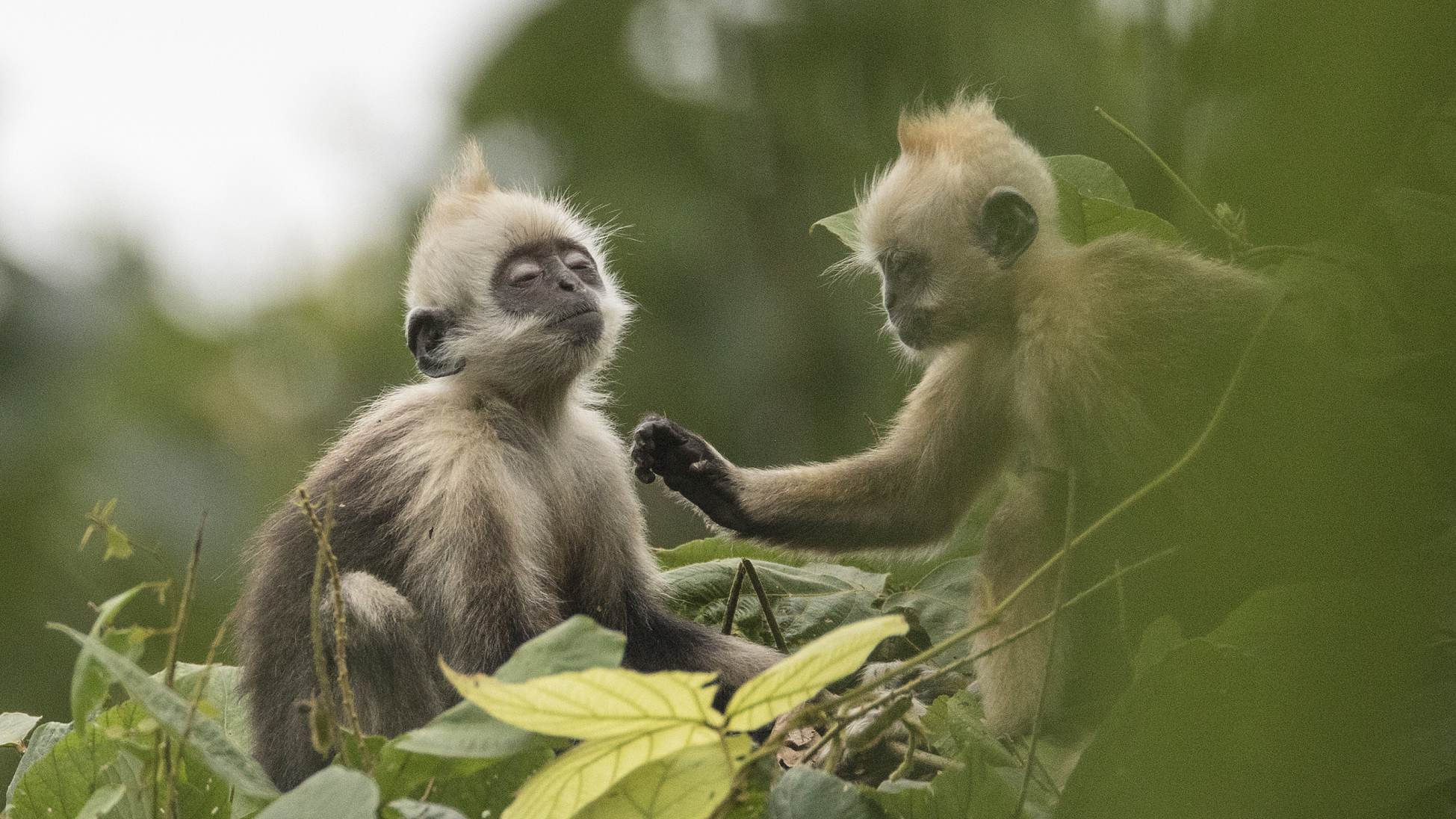
The sun is about to set, the steep walls of the karst mountains start to cool down. A swift shadow flashes across the black and white stone wall, and disappears into a cave, leaving a glimpse of its long white tail.
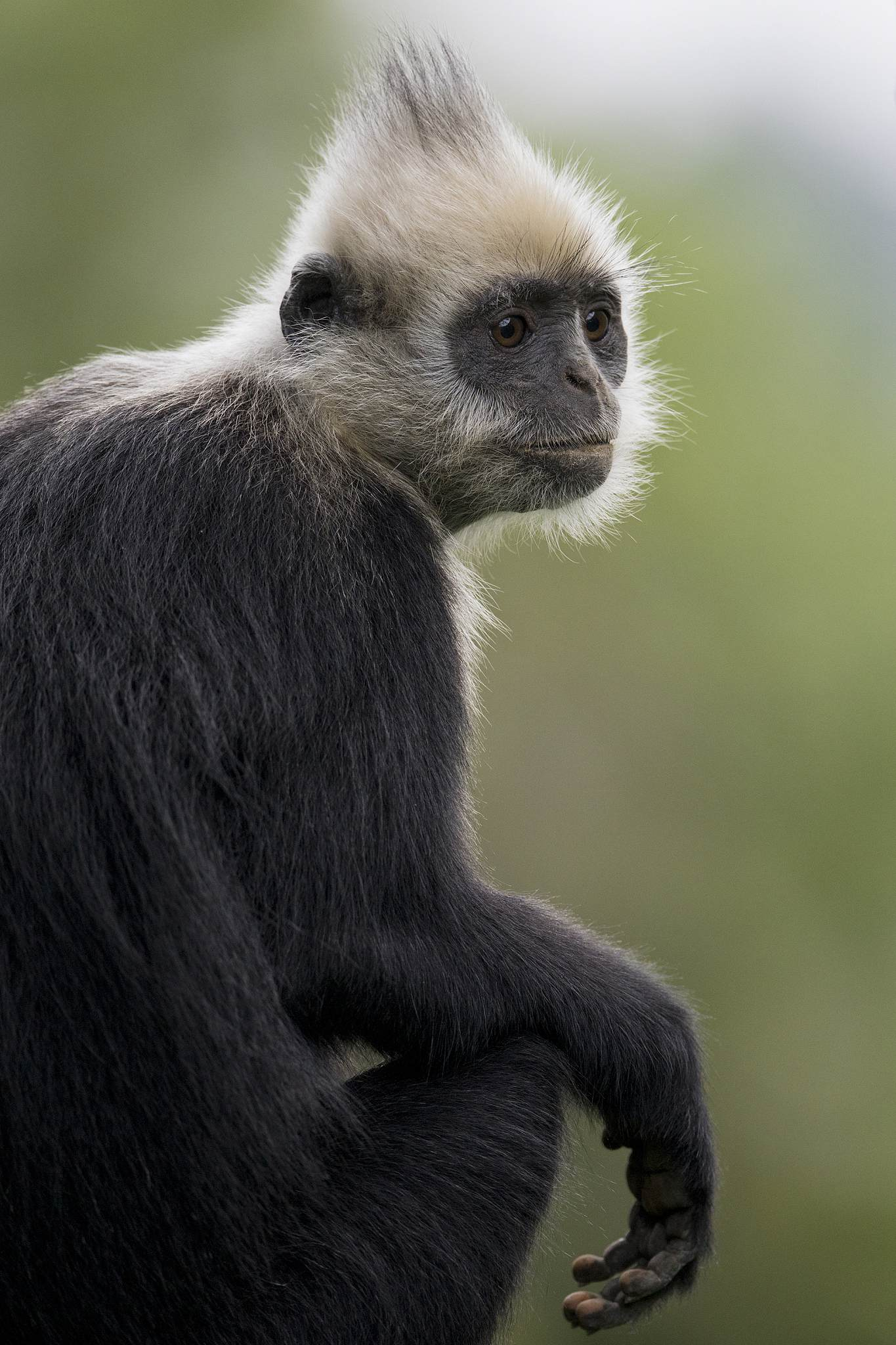
A closeup of a white-headed langur. /Photo by Qiu Lingling via VCG
The beautiful long tail belongs to the white-headed langur, one of the rarest primates on the planet. The karst mountains of south China’s Guangxi Zhuang Autonomous Region are home to about 1,000 of this critically endangered species.
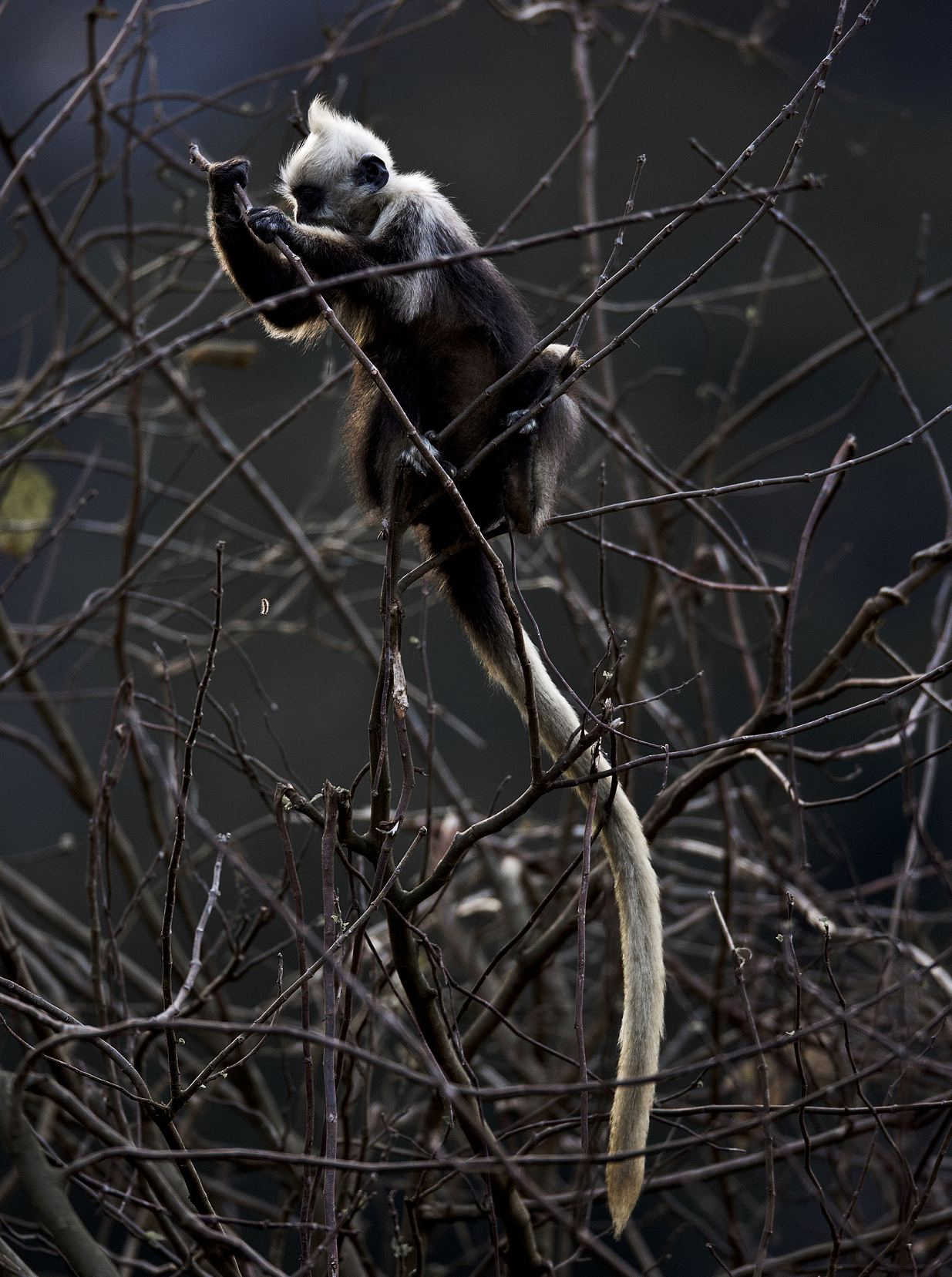
The tail of the white-headed langur is usually around 85 centimeters, while the body length is around 50 centimeters. /Photo by Qiu Lingling via VCG
The white-headed langurs live in a region of around 200 square kilometers between Zuojiang River and its tributary Mingjiang River.
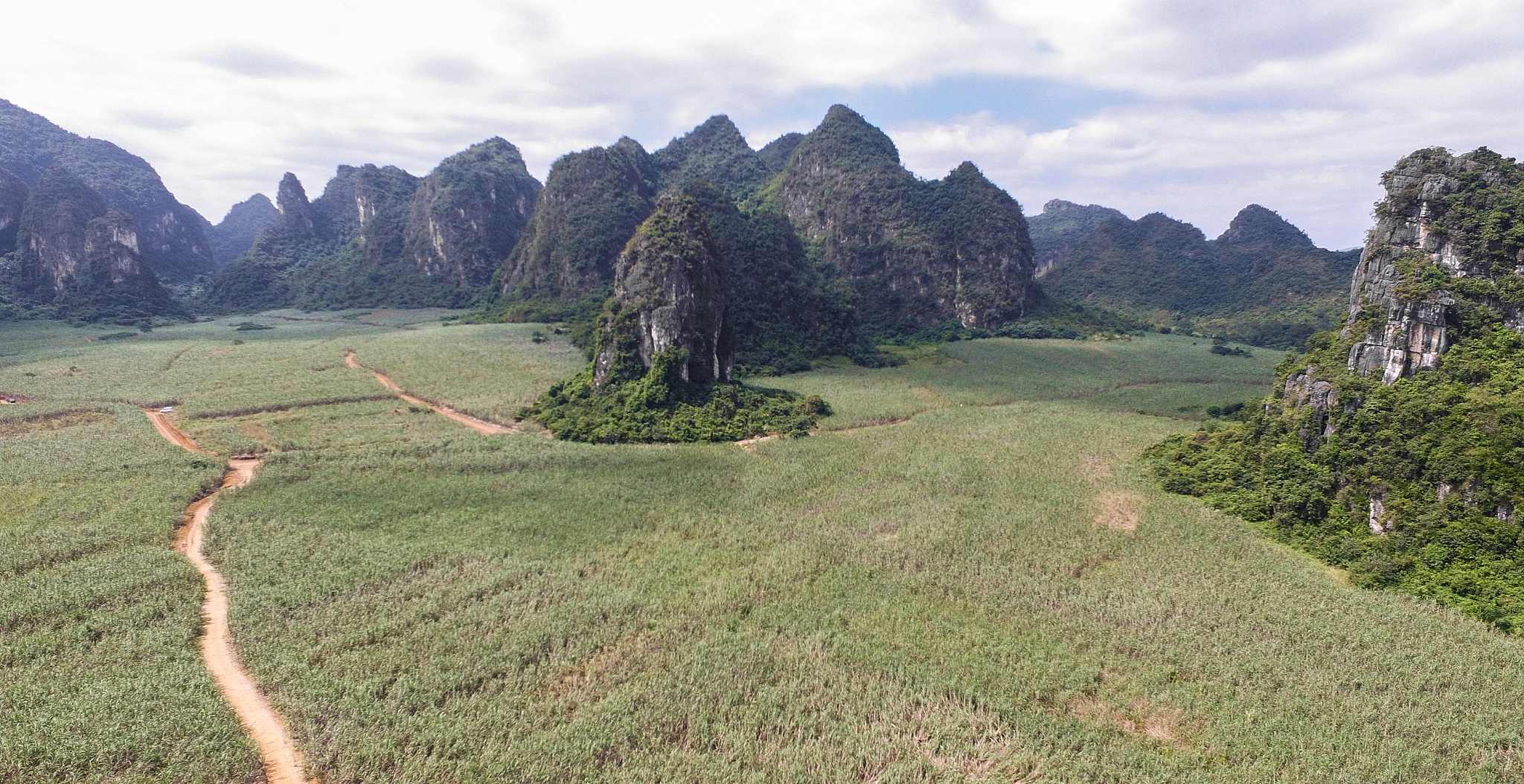
The karst landform in south China's Guangxi Zhuang Autonomous Region. /Photo by Qiu Lingling via VCG
The white pelage of its head and shoulders looks like a delicate pointed hood. The long tail is about twice the length of its body. Newborns are yellow and only change color when they are around four months old.

The newborns are yellow and change color around four months old. /Photo by Qiu Lingling via VCG
The beautiful black and white coat of the adults allows them to blend in with the black and white limestone of the karst landform.
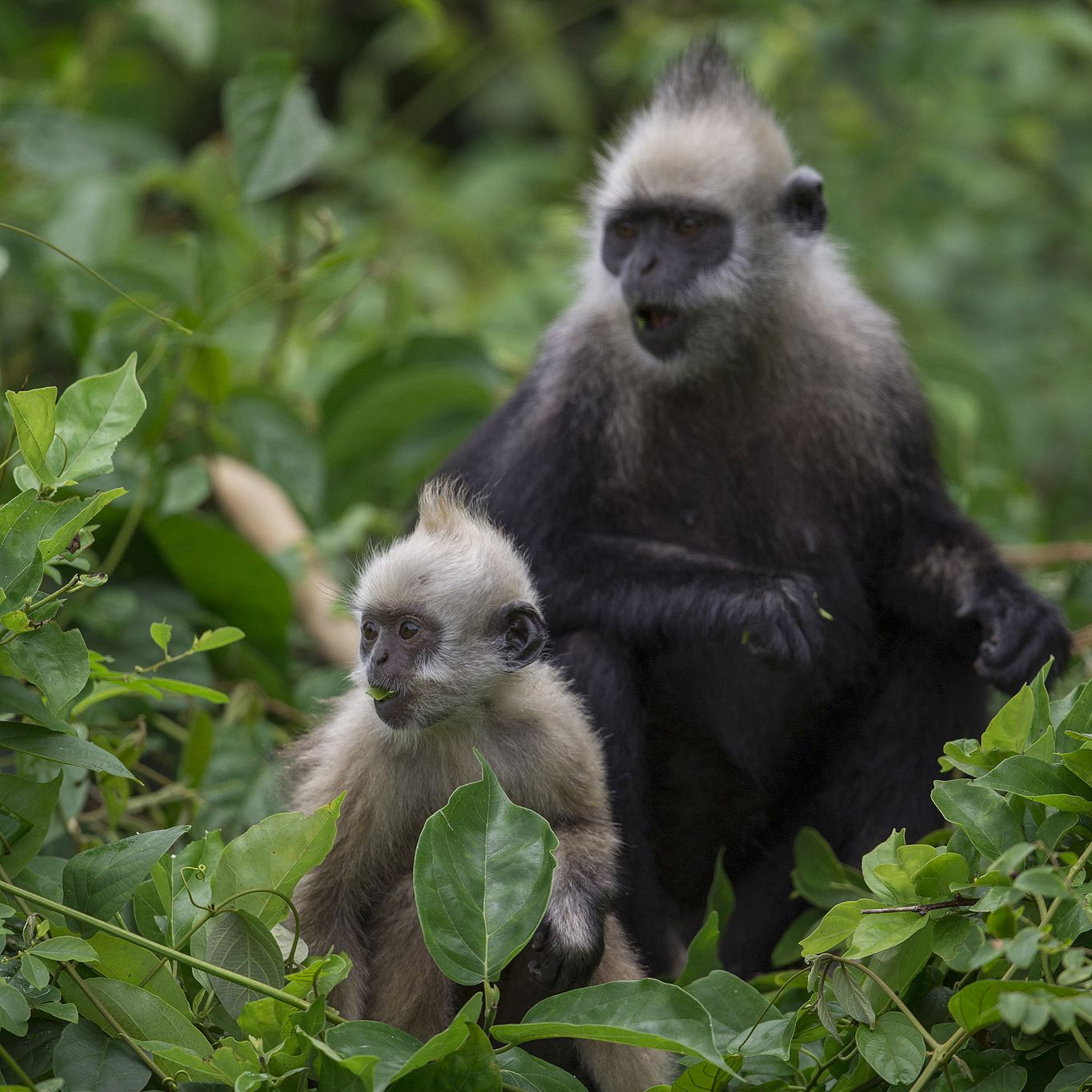
A mother monkey with its offspring. /Photo by Qiu Lingling via VCG
These monkeys can feed on at least 80 known plant species. They are often seen licking the limestone to obtain minerals and salt. The caves and crevices on the limestone walls are their best sleeping sites.
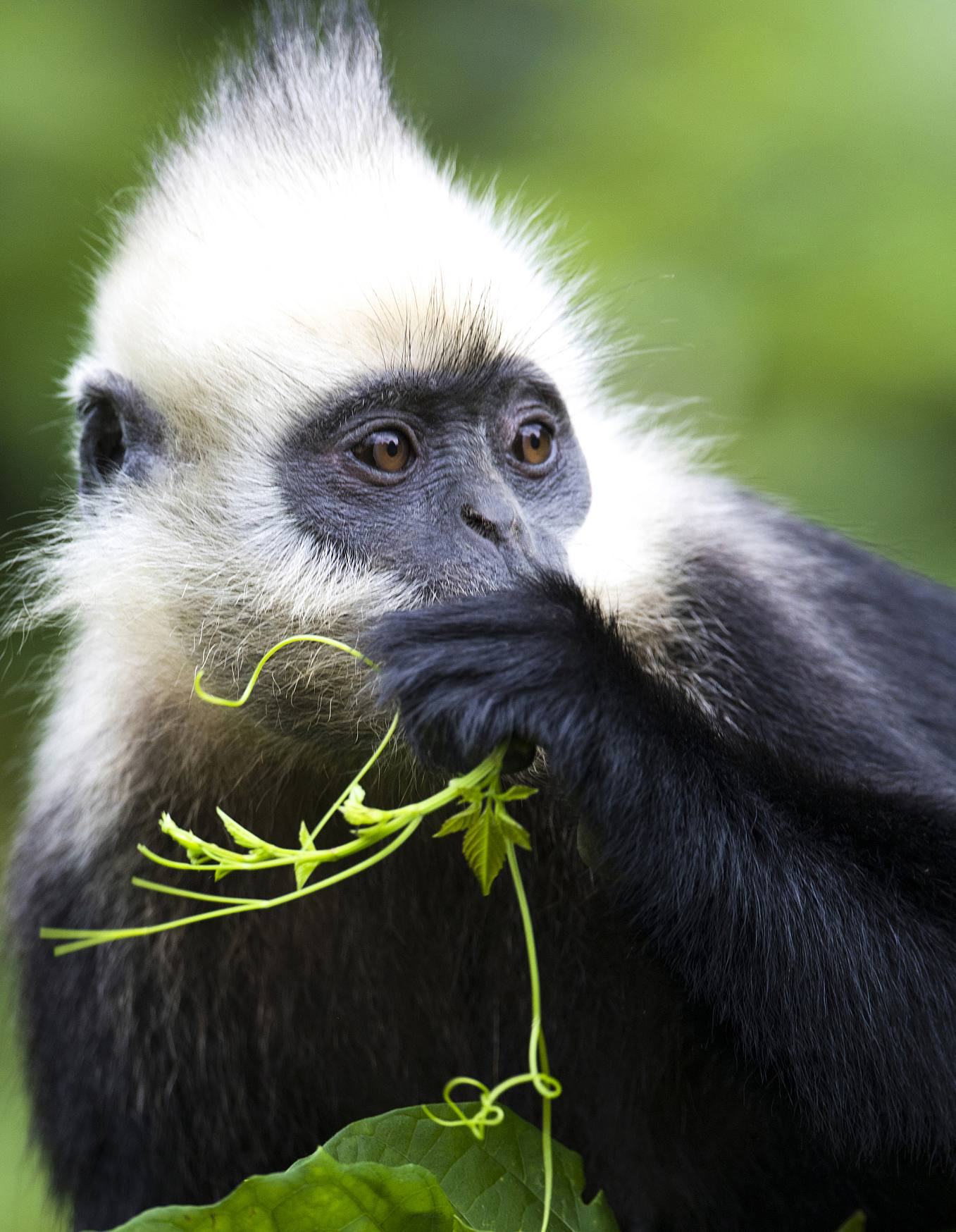
A white-headed langur's diet contains more than 80 types of plants. /Photo by Qiu Lingling via VCG
(Video by CGTN's Nature film crew in Guangxi. Cover photo by Qiu Lingling via VCG.)
(If you want to contribute and have specific expertise, please contact us at nature@cgtn.com)

Copyright © 2018 CGTN. Beijing ICP prepared NO.16065310-3
Copyright © 2018 CGTN. Beijing ICP prepared NO.16065310-3